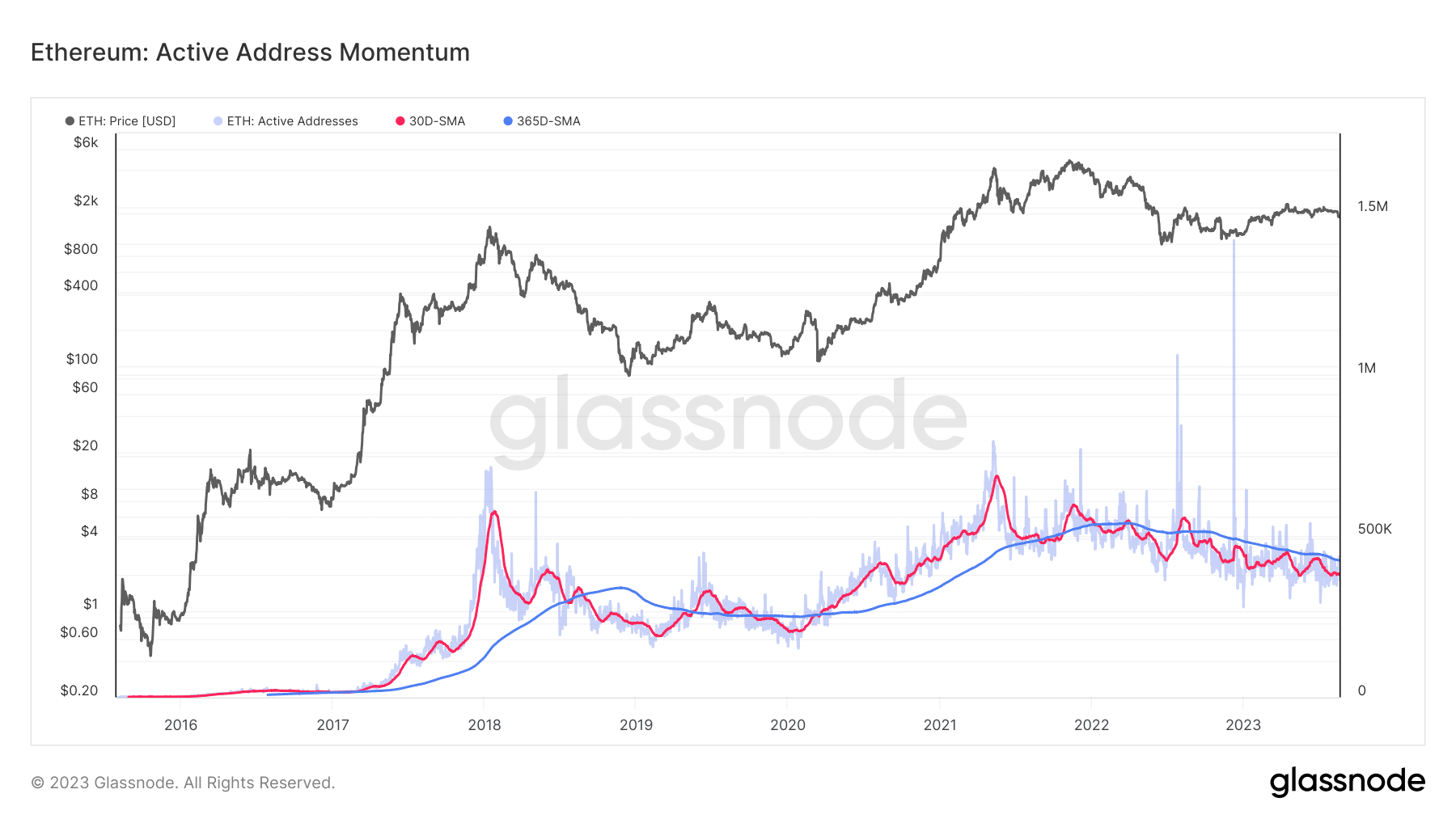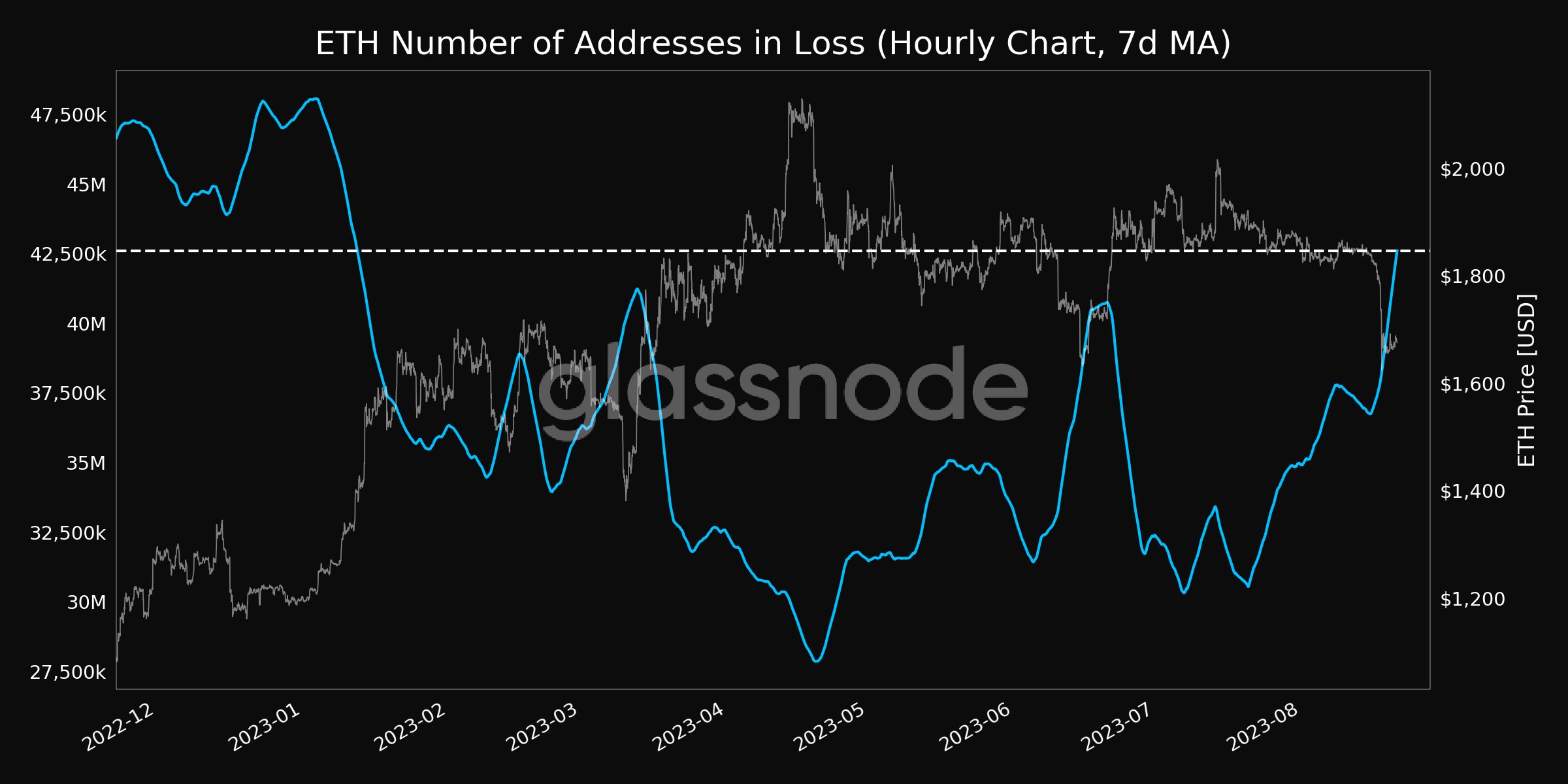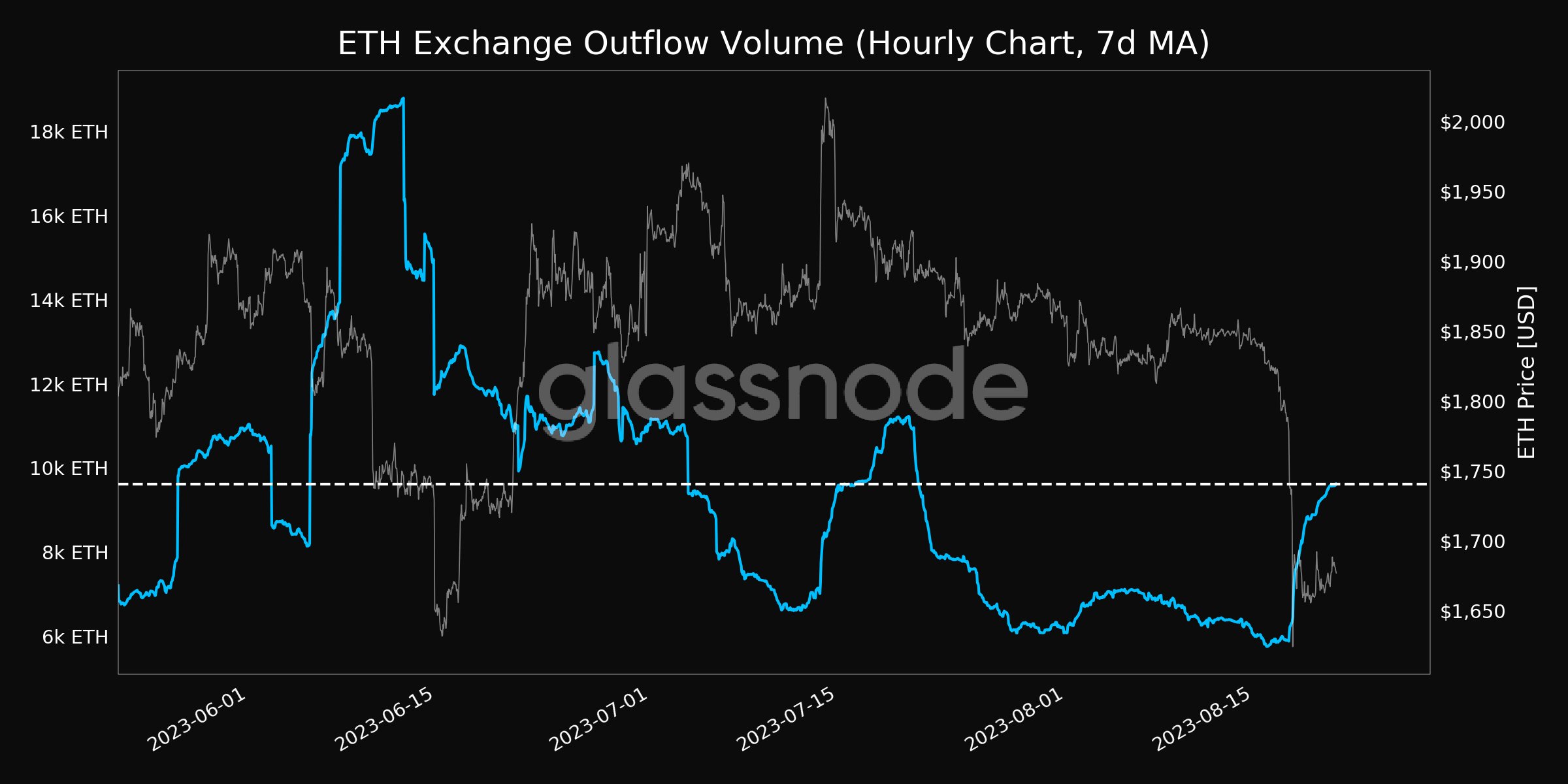- In the last few months, Ethereum’s network activity has shown a decrease. This situation was in the form of a decrease in the monthly average active addresses of the network.
- According to Glassnode Alerts, the number of ETH addresses in loss reached a seven-month high of 42,602,870.333.
- According to CryptoQuant, ETH’s net deposit transactions on exchanges were high compared to the seven-day average, indicating high selling pressure.
Is the unexpected decrease in Ethereum price due to the decrease in network activity?
Does Decreased Network Activity Affect ETH Price?
In the last few months, Ethereum’s network activity has shown a decrease. This situation was in the form of a decrease in the monthly average active addresses of the network. The monthly average active ETH addresses remained below the annual average.
This clearly indicates low activity, which can be taken as a bearish signal. While network activity decreased, the price did not increase. Could the reluctance to push Ethereum’s price up be a result of decreased network activity?
According to the data, ETH experienced a decrease of more than 9% in the last seven days, reflecting its slow movement. At the time of writing, it was trading at a price of $1,664 and had a market value of over $200 billion.
The price drop had a significant impact on investor portfolios. According to Glassnode Alerts, the number of ETH addresses in loss reached a seven-month high of 42,602,870.333.
However, upon closer inspection, the reason for the downward trend may not be the decrease in network activity. This is because while ETH’s active addresses decreased, Layer-2 solutions such as Base, Optimism, and rollups gained popularity.
The main reason for market participants transitioning to L2s was that they offered greater scalability. For example, Coinbase’s L2 Base bridged a value of $251 million, including $155 million of ETH, in a short period of time.
A deep dive into Ethereum’s situation
Taking a closer look at Ethereum’s chain performance provided a better understanding of what was happening in the ecosystem. When examined, it was revealed that investors who invested in funds and trusts such as Grayscale had a relatively weak buying sentiment.
Additionally, according to CryptoQuant, ETH’s net deposit transactions on exchanges were high compared to the seven-day average, indicating high selling pressure. However, what was interesting was that when ETH fell victim to its latest price correction, investors saw it as an opportunity to increase accumulation.
This was clearly seen with Glassnode Alerts’ sharing, which indicated that Ethereum’s exchange outflow volume reached a monthly high during that period.
Not limited to metrics, several market indicators also drew a bearish picture. For example, the Moving Average Convergence Divergence (MACD) showed a bullish advantage in the market.
Additionally, ETH’s Chaikin Money Flow (CMF) recorded a decrease, increasing the likelihood of a price drop. However, the Money Flow Index (MFI) rebounded from oversold territory and could help increase the token’s price.



